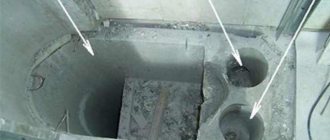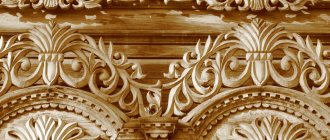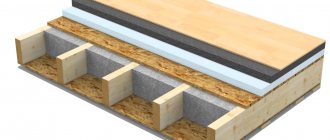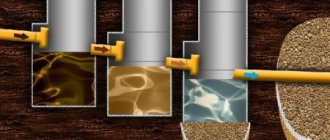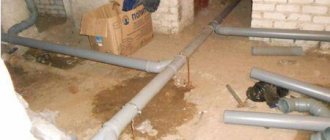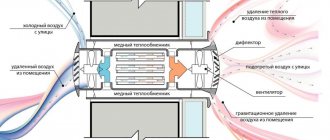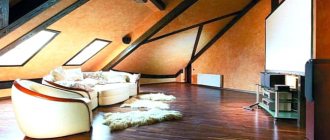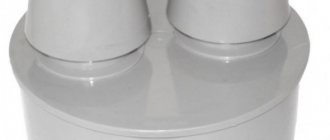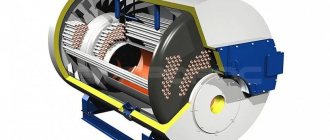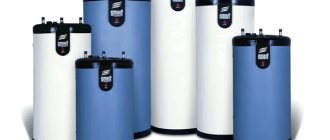15.11.2019
Normal ventilation operation is important not only for the comfort of residents and maintaining an optimal level of humidity in the apartment, but also to ensure safety if gas equipment is installed in the house.
Also, the lack of ventilation leads to the appearance of unpleasant odors in the kitchen, mold in the bathroom and toilet, and the accumulation of substances hazardous to health released during operation of the gas boiler, so it is important to periodically check the performance of the ventilation system.
How to check ventilation operation
When the hood is not working well, there are two simple ways to check the traction force:
- Open the window slightly and bring a lit candle or lighter to the ventilation grille. The flame should deflect towards the vent. If this does not happen or the flame is directed towards the room, the ventilation is faulty. The method can be used in houses not connected to the gas supply system.
- Open the window. Get a piece of paper large enough to completely cover the vent. Press it firmly against the grate and remove your hand. If the sheet remains in place, the traction is good. If you fall, you should call a specialist.
It is advisable to use both methods in cool weather, because... in the heat, the air is “heavy”, the draft weakens and it will be difficult to check its strength. Indirect signs of a malfunction may be the formation of condensation on the windows, the appearance of mold or mildew on the walls bordering the street and in the bathroom, and foreign odors coming from the entrance or from neighbors.
Regulatory Requirements
Let's start by studying the current regulatory documents. Current SNiPs for ventilation of residential buildings are 2.04.05-91 “Heating, ventilation and air conditioning” and 2.08.01-89 “Residential buildings”.
For the convenience of the reader, we will bring together the key requirements of the documents.
Temperature
For a living room, it is determined by the temperature of the coldest five-day period of the year.
- If its value is above -31C, it is necessary to maintain at least +18C in the rooms.
- When the temperature of the coldest five-day period is below -31C, the requirements are slightly higher: the rooms must be at least +20C.
For corner rooms that have at least two common walls with the street, the norms are 2 degrees higher - +20 and +22C, respectively.
Useful: the variability of requirements is due to the fact that at low temperatures and increasing heat loss, the dew point (the point in the thickness of the enclosing structure where condensation of water vapor begins) shifts towards the inner surface. The indicated temperatures exclude freezing of the wall.
Consequences of freezing.
For bathrooms, the minimum temperature is +18C, for baths and showers - +24.
Air exchange rates
What are the standards for ventilation of residential premises (more precisely, the rate of air exchange in them)?
| Room | Minimum air exchange |
| Living room | 3 m3/hour per 1 m2 area |
| Kitchen | 60 m3/hour for electric stoves and 90 m3/hour for gas stoves |
| Bathroom, toilet room | 25 m3/hour |
| Combined bathroom | 50 m3/hour |
Additional requirements
What other requirements and recommendations can be found in SNiP for heating and ventilation of residential buildings?
- The ventilation scheme may provide for air exchange between separate rooms. Simply put, you can organize an exhaust hood in the kitchen, and air flow in the bedroom. Actually, the document specifies the recommendation: exhaust ventilation should be provided in kitchens, bathrooms, bathrooms, toilets and drying cabinets.
In Stalinka buildings you can see two ventilation grilles in the kitchen area. One of them opens into a chimney: the houses were built for stove heating.
- The ventilation of the apartment must be connected to a common ventilation duct no lower than 2 meters from the ceiling level. The instructions are intended to minimize the likelihood of the rod overturning in windy weather.
- When using separate rooms in a residential building for public needs, they are equipped with their own ventilation system, not connected to the general one.
- When the temperature of the coldest five-day period is below -40C for three-story and higher buildings, it is allowed to equip fresh ventilation with heating systems.
- Gas boilers and water heaters with combustion products discharged into general ventilation are allowed to be installed only in buildings no higher than five floors. Solid fuel boilers and water heaters can only be installed in one- and two-story buildings.
- It is recommended to supply supply air to rooms with constant occupancy. Which, in fact, again leads us to the already mentioned scheme: air flow through the living rooms and exhaust through the kitchen and bathroom.
Causes of hood failure
There are several reasons for the occurrence of reverse draft, when air from the ventilation is sucked into the room, or its complete absence:
- Installation errors. Incorrect placement of ventilation pipes or their insufficient length is the main cause of backdraft. It is especially common among residents of upper floors, because... to ensure the movement of air flows, the height of the pipe must be at least two meters.
- Illegal reconstruction. There are often cases when residents of apartment buildings unauthorizedly make changes to ventilation structures or completely dismantle a section of the ventilation duct running through their apartment. As a result, the functioning of the system stops.
- Installation of plastic windows. Replacing double glazed windows can have a big impact on air circulation, especially in older homes. In them, ventilation systems were designed according to the principle of natural impulse, based on the use of the temperature difference between indoors and outdoors. An important part of the system's operation was the constant flow of air from outside. Hermetically sealed plastic windows cannot provide it, especially in winter, when they are tightly closed due to the cold, and in summer such ventilation is useless, because... the temperature inside and outside the room is almost the same.
- Ventilation duct clogged. Construction debris, parts of the ventilation system that have collapsed due to dilapidation, a bird's nest, etc. can block the air movement.
Types of residential buildings
Considering residential buildings, we can divide them into standard and individual. Typical are sample templates that demonstrate ready-made solutions where key points have been developed. They are used for large-scale developments.
In such blanks, minor adjustments are made according to local conditions. For example, orientation to the area or location of connection to networks.
A special house, with unique layouts and facades, with personal wishes and ideas is called individual.
There is also a division into multi-apartment and single-apartment buildings.
Multi-apartment buildings are those that have shared premises and utilities outside the apartment boundaries.
This also includes boarding schools, hostels and hotel complexes. Often in high-rise buildings there are other non-residential objects: parking lots, retail outlets, service organizations and others.
Ways to solve ventilation problems
Having figured out the cause of the traction problem, you can begin to eliminate it. There are several ways to correct the situation:
- Cleaning the ventilation duct. The operating rules of apartment buildings prohibit residents from accessing public communications, so in case of serious problems, work must be carried out by employees of specialized services. However, minor blockages can be cleared yourself. Remove the protective grille and look inside the ventilation duct. Using a broom or vacuum cleaner, clean the channel. In case of serious difficulties, call the management company.
- After installing double-glazed windows, ensure frequent ventilation of the room.
- In a private house, provide a gap between the front door and the threshold for air flow.
- Install supply valves or double-glazed windows with built-in valves. They are equipped with special curtains that allow you to block the air flow if necessary. Valves are available in window, ceiling and wall types.
- In case of serious problems, use forced air devices. Our company employees will tell you more about the equipment.
- Installation of forced ventilation. An electric fan is mounted directly into the hood to provide air movement.
If the measures taken do not help, contact the management company.
Air supply
To create an air space that meets hygienic and technological requirements,
establish the required frequency of air exchanges. For a number of premises it is found in the codes of rules, for others it is determined by calculation.
In order to save money and ensure uninterrupted operation, ventilation is used with natural draft. Air supply is ensured by supply air infiltration
and through door leaks. The direction of movement of air masses is organized by the windows to the bathroom, bathroom and kitchen.
With air supply for both the whole house and apartment
spaces collide not only with workers from organizations involved in the construction or operation of a building, but also with ordinary residents. For example, over time, the traction in the channels disappeared. Or after installing plastic windows, an influx from the common corridor was noticed. Of course, the tenant is looking for a solution to the problem. And it is imperative to take into account that there is a regulatory framework that regulates this area.
a complex of project documents in reality
The facility must undergo state or independent examination to ensure compliance with the requirements of the State Construction Committee of Russia. And only after a positive conclusion is a set of working drawings developed.
Precautions when working in a ventilation duct
If the air outflow is disrupted, an accumulation of flammable gases and combustible debris may occur in the ventilation shaft, so during operation, take the following precautions:
- Do not use open fire to illuminate the ventilation shaft and do not try to set fire to debris accumulated in the chimney, as this may lead to a fire.
- Do not place heavy objects into the ventilation duct.
- Do not use aggressive solvents or other chemicals to clean pipes. It is permissible to use dry ice, which when melted leaves no traces.
Sanitary rules and regulations
- SanPiN 2.2.4.548-96 “Hygienic requirements for the microclimate of industrial premises” - these sanitary rules and standards are intended to prevent the adverse effects of the microclimate of workplaces and industrial premises on well-being, functional state, performance and human health.
- SanPiN 2.4.1.3049-13 “Sanitary and epidemiological requirements for the structure, content and organization of the operating mode of preschool educational organizations” - these sanitary and epidemiological rules and standards are aimed at protecting the health of children when carrying out activities related to education, training, development and health improvement, care and supervision in preschool organizations.
- SP 1009-73 “Sanitary rules for welding, surfacing, and cutting of metals” - these rules apply to all types of welding, surfacing and thermal cutting of metals used in industry and construction.
Supply ventilation systems
offers a wide range of different types of ventilation equipment:
- Devices for forced air supply and purification. Models of different sizes and power with a different set of functions are presented: heating, passive ventilation, ionizer, UV radiation, CO2 level measurement, etc.
- Supply and exhaust ventilation - equipment for ventilation, cleaning and heating of air.
- Supply valves - provide ventilation without the use of electricity, a high level of cleaning and protection against freezing.
- Dust filters are high-quality consumables for the equipment presented in the online store.
The AEROS company is Tion No. 1 dealer in Russia . We create comfortable conditions for our clients:
- We provide a two-year warranty on all equipment.
- Professional in-house teams of installers are available to customers.
- Delivery throughout Novosibirsk and the region is free.
You can get advice on the presented range and technical characteristics by contacting the company’s specialists by phone listed on the website or via online chat.
